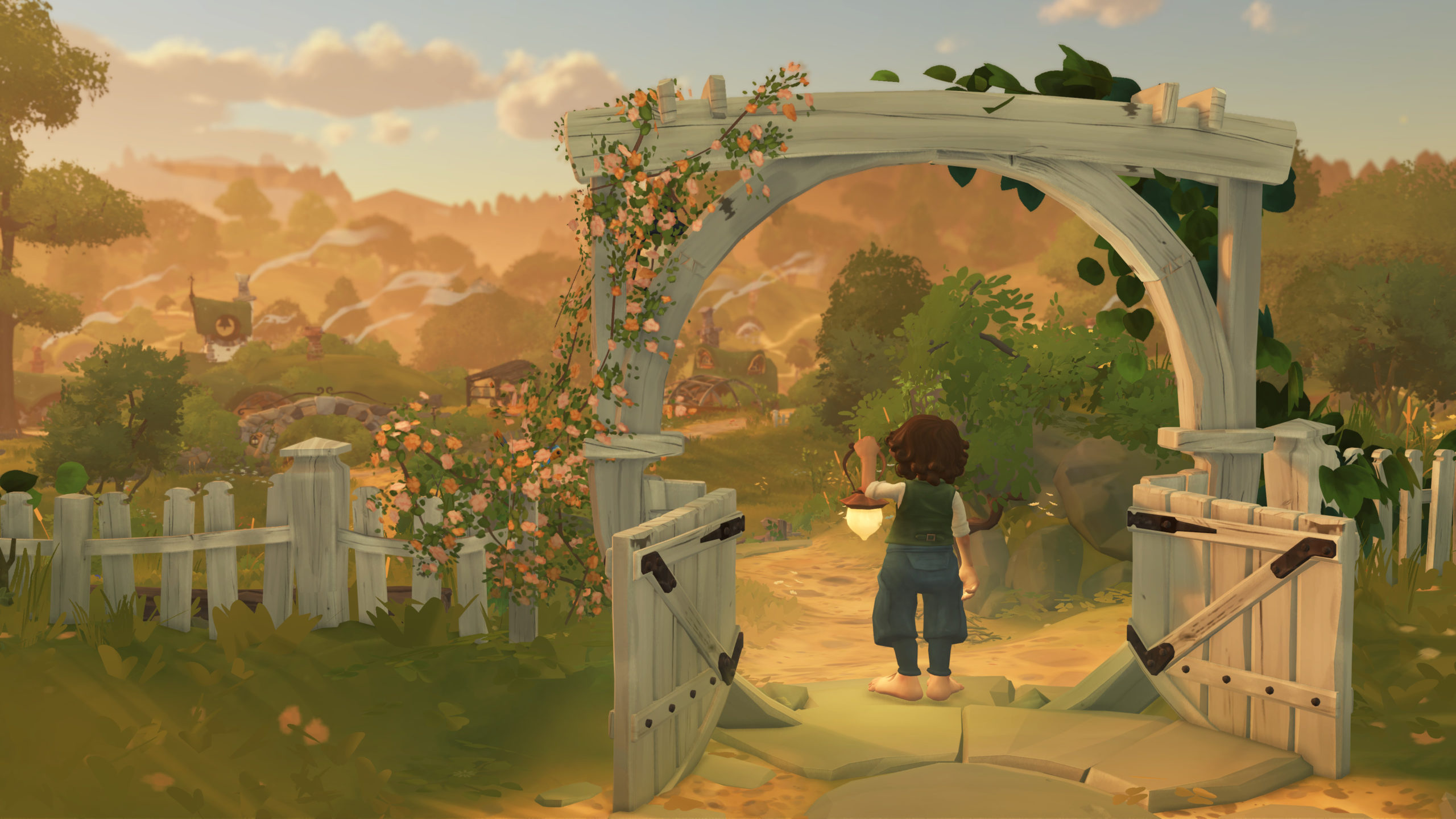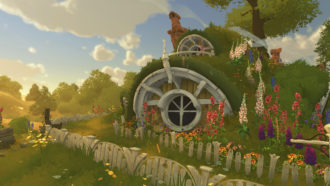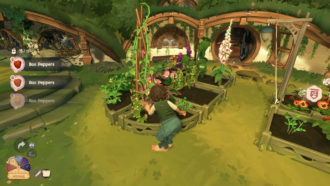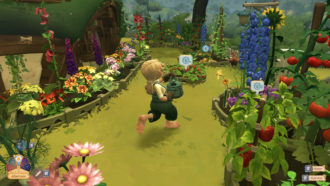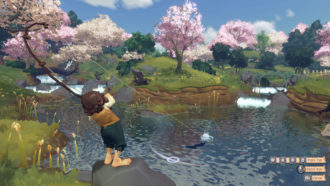Platforms:
PC, Nintendo Switch, PS5, Xbox Series X|S
Released:
July 29, 2025
Publishers:
Take-Two Interactive, Fictions
Developer:
Wētā Workshop
I am a huge Lord of the Rings fan, and for the past few years, that has meant the misfortune of playing absolute flops like The Lord of the Rings: Gollum and The Lord of the Rings: Return to Moria. It’s been a long time since the franchise has had a real winner in the gaming sphere, and Tales of the Shire: A The Lord of the Rings Game is here to take a crack at it while also leaning in the complete opposite direction of the usual action filled affair.
So many games set within Middle-earth focus hard on the War of the Ring, allowing players to be part of that adventure. While some venture outside of it, there is always a connection, the idea that what you are playing is some sort of sequel or prequel. While Tales of the Shire is by nature of time, still set somewhere within the great span of Middle-earth lore, it feels quite disconnected from the central narrative of The Lord of the Rings, because its story is far more compartmentalised. It could be exactly the fresh take that the franchise needs.
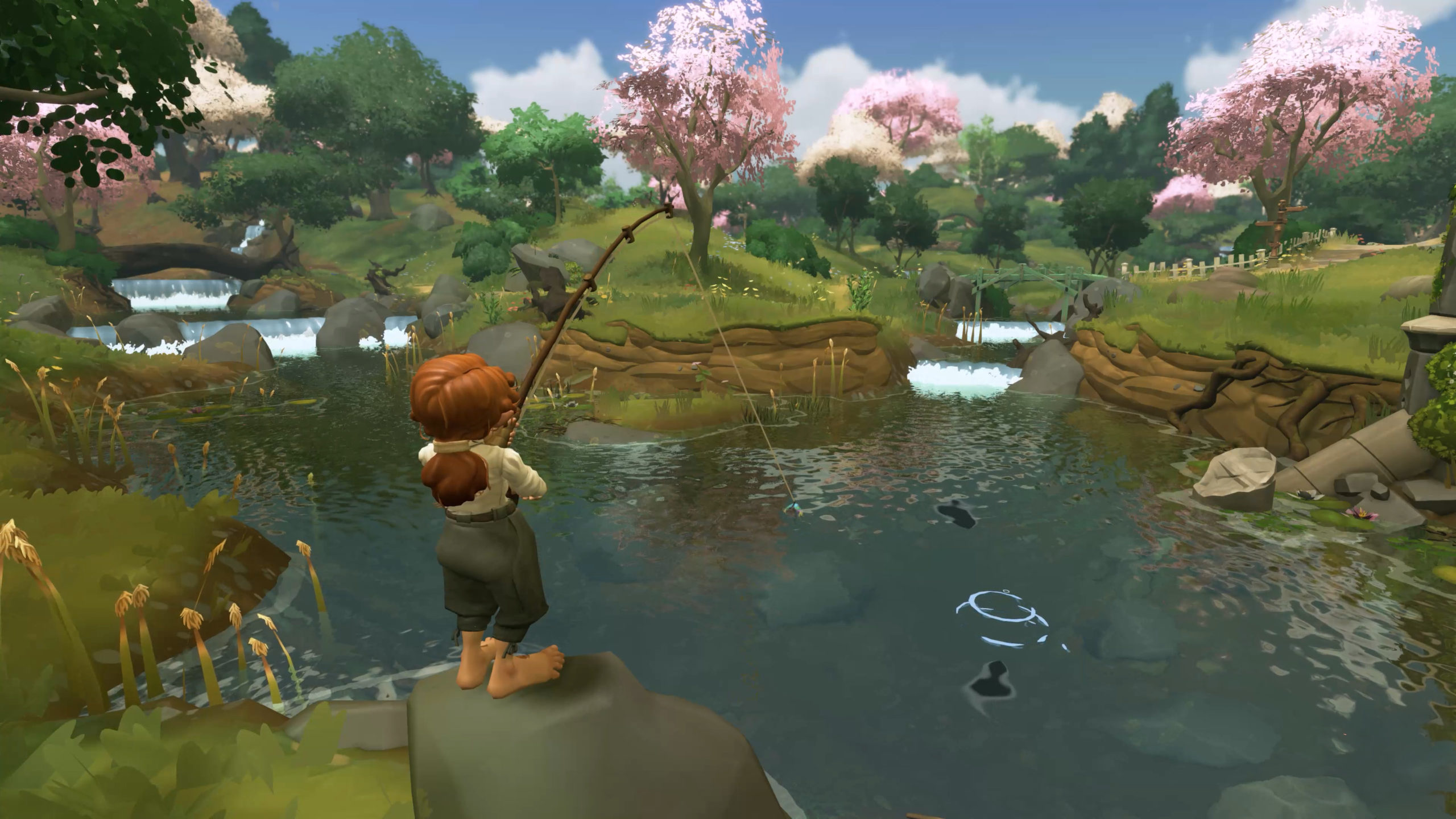
Tales of the Shire opens with your player character coming to the Shire from Bree, looking to start a new life in one of the small villages. The character creator isn’t especially robust, and I found that quite a lot of the facial options were exaggerated enough that it was actually uncanny to look at them, especially in motion. Despite this, I do love the ability to pick a default idle and running animation for your hobbit based on the personality you choose for them. I gave my hobbit anxiety, which I found engaging, watching as they nervously wring their hands through every conversation, no matter how trivial.
The game also does brilliant work with the naming system. Players can select from a huge list of both first and surnames, all of which are canon, and I am a huge sucker for that. You do have the freedom to create a first name, but the surnames are non-optional, which some may have gripes with, but as a pedantic nerd who always wants their player characters to have lore-accurate names, I thought it was great.
“Cooking in Tales of the Shire has a lot of depth to it.”
Once actually settled into the Shire, your hobbit is given a hobbit hole to live in. It’s a little rundown, and most of the rooms have been closed off. But once settled in, it’s time to start getting acquainted with the townspeople. You quickly learn that whether or not the village of Bywater is actually a village by official standards is up for debate, and the locals are looking to change that. Much of the early quests in the game revolve around helping Bywater become a real village by setting up clubs and helping other hobbits.
While the premise is exactly the sort of thing I can imagine hobbits making a big deal about, the actual quests involved are often monotonous. It’s a constant back-and-forth between characters, often located at opposite ends of the Shire. One early quest revolves around delivering items between two characters four times in a row, and it grew tiresome very quickly. It’s a shame, because Tales of the Shire does have some genuinely funny moments. I really enjoyed the whole saga of the hobbits basically kidnapping a local assessor to convince him to change his mind on Bywater’s village status, especially since the main way they forced him to stay put was just by offering him dinner.
It’s disappointing that a game with such a large focus on building a community, a village, fails on most levels to create emotional connections between the player and its characters. One area where I felt this problem most clearly was in the first line of dialogue that characters say when interacted with. Nefi, the only Dwarf in town, really stands out here. The fact that she says, “Have you not seen a Dwarf before?” whenever I interact with her, as if I don’t drop by her forge whenever I want to get my hands on some bacon grease, is so strange and disconnected. Lots of hobbits have similar interactions like this, where what they say doesn’t quite make sense in the current context, and it can be very jarring.
One of the other ways to get to know your neighbours is through inviting them over for a shared meal, and this is one of the areas that Tales of the Shire gets absolutely right. It’s a simple process: you send out a letter to the hobbits you are planning to invite over for a meal the next day, and then the morning after, they will each reply to let you know exactly what kind of meal they are craving. This is a lot of fun, cooking in Tales of the Shire has a lot of depth to it, which is appropriate given just how many meals a hobbit eats per day. When creating a dish, you first select ingredients, and many meals will have a non-specific requirement like ‘cheese’ or ‘mushroom’, which allows you to select anything from that category and therefore gives you a chance to alter the flavour profile.
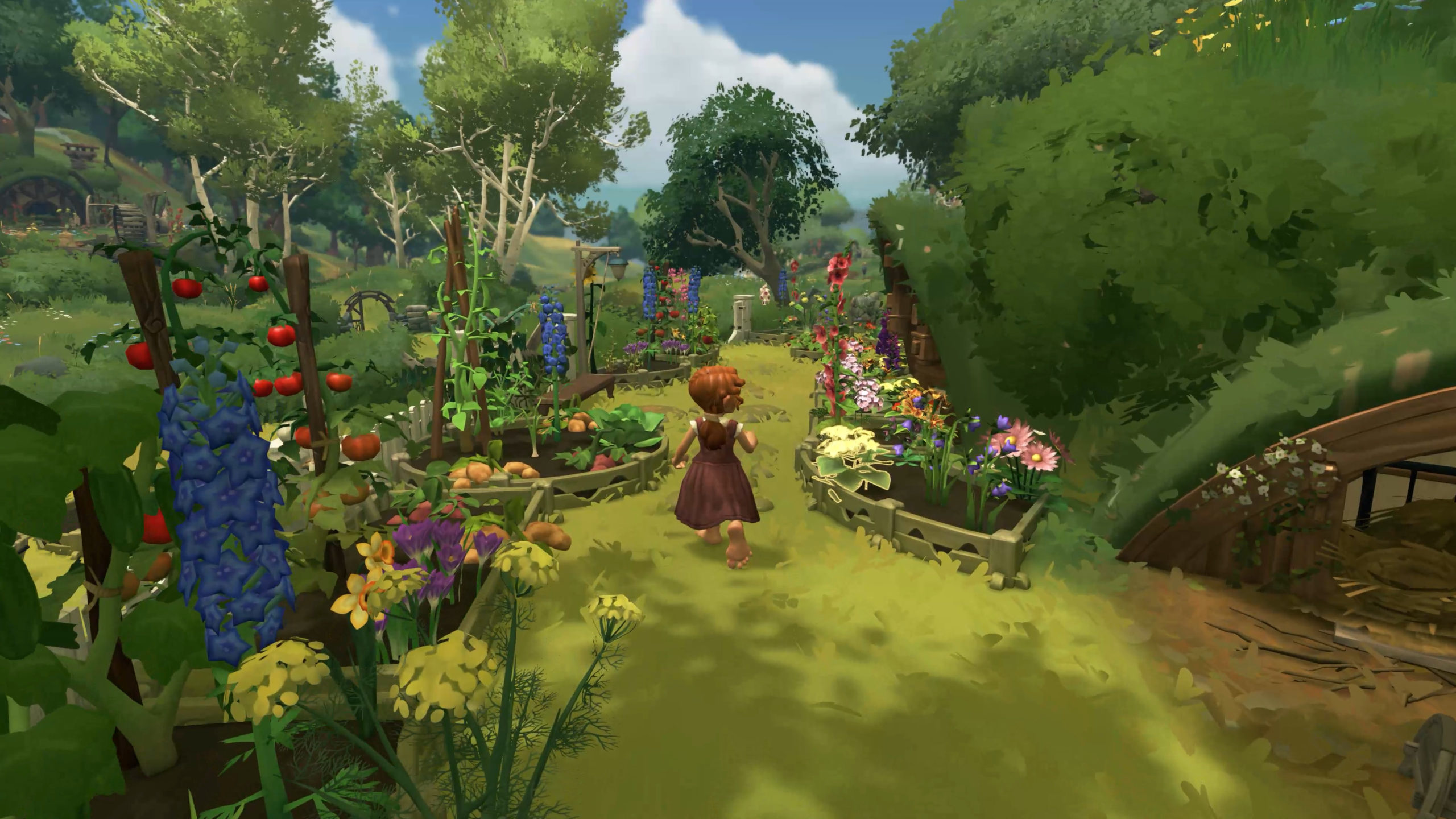
If one of the hobbits attending your luncheon is after a salty dish, you could specifically select a wild beef mushroom to add that salty flavour, for example. Each item you add (apart from staples like flour or milk) alters the flavour, and whichever flavour wins out is what categorises the dish. Three salty ingredients, with one bitter and one sour, will result in a salty dish. There is also the element of texture. When cooking, there is a graph in the bottom right that indicates the ideal texture for the dish, and you need to gauge just how much chopping, mixing and frying you need to do in order to get that dish hitting the sweet spot. Additionally, there is another bonus for only having two complementary flavours in the dish, such as spicy and sour.
Meeting a hobbit’s craving, and providing them with a higher-star dish, is the quickest way to increase your friendship with them, and to get them to provide you with new recipes and furniture items you can use to decorate your rundown hobbit hole. There’s a surprising amount of home customisation available, as pretty much every surface allows you to change its paint or finishing. Furniture and decorations can be placed without being snapped to a grid, so there is a lot of freedom there, too.
Figuring out how to place a bunch of rectangular-shaped furniture in a round-shaped house is a problem all on its own, but I suspect it must also be a problem hobbits face on a daily basis, so I can’t really complain about it. The best part of the hobbit hole, though, is the enormous pantry that fills in real time with whatever new items to add to it. For example, adding a stack of pumpkins to the pantry will have the pumpkins actually appear on the shelf. It’s super cute, and the difference between the pantry at the start and when you are deep into the game is very satisfying.
“Unfortunately, where Tales of the Shire falls flat is the visual presentation.”
Both farming and foraging in Tales of the Shire are a little underbaked, though. It’s pretty clear that the game is mostly about gathering ingredients to cook and less about the actual prep-work. Most fruits and vegetables only take a few days to grow, and the size of your hobbit hole means there isn’t much room for a sprawling farm, at least not for a while. You also can’t till the ground and rely on purchasing planters for your garden, which definitely feels restrictive. The one interesting element of farming is that certain crops grow better depending on which crops they are planted next to. So it’s important to arrange your planters to accommodate crops that thrive in each other’s presence and separate the ones that don’t.
Unfortunately, where Tales of the Shire falls flat is the visual presentation. The colour scheme is certainly lovely and bright, and the shifts between seasons are especially vibrant and provide a nice change of scenery. However, the actual modelling, lighting and texturing leave a lot to be desired. I’m not at all against the cartoony art style the game has gone with, but all of the models seem unrefined and have a lot of jagged edges where I can tell they should be smooth. The textures on the ground especially leave a lot to be desired; they just look flat and almost like the textures haven’t quite popped in yet at all times.
While playing, I also experienced a great deal of framerate issues that have improved since a recent patch, but are still very present every time I move from one area of the Shire to another, and the game has to unload the old area and load in the new one. I also experienced a lot of crashes, and while this has also improved since the patch, the game has still crashed three times after it, so I’m not certain the issue has been resolved entirely. Though I am hopeful that it will be fixed with future patches, since the performance has been better since the last one.
6.5
Decent
Positive:
- In-depth cooking mechanics
- Great home customisation
Negative:
- Performance issues and crashes
- Boring questlines
- Uninteresting character interactions
While there are certainly some areas where Tales of the Shire shines, like its highly engaging cooking mechanics, the package as a whole is lacking the polish to be a real winner. There was clearly a lot of love put into the game, and hopefully, with future patches, the performance issues will be resolved. For now, though, I am still longing for the rolling green hills of the Shire, because this game didn’t quite scratch that itch.
